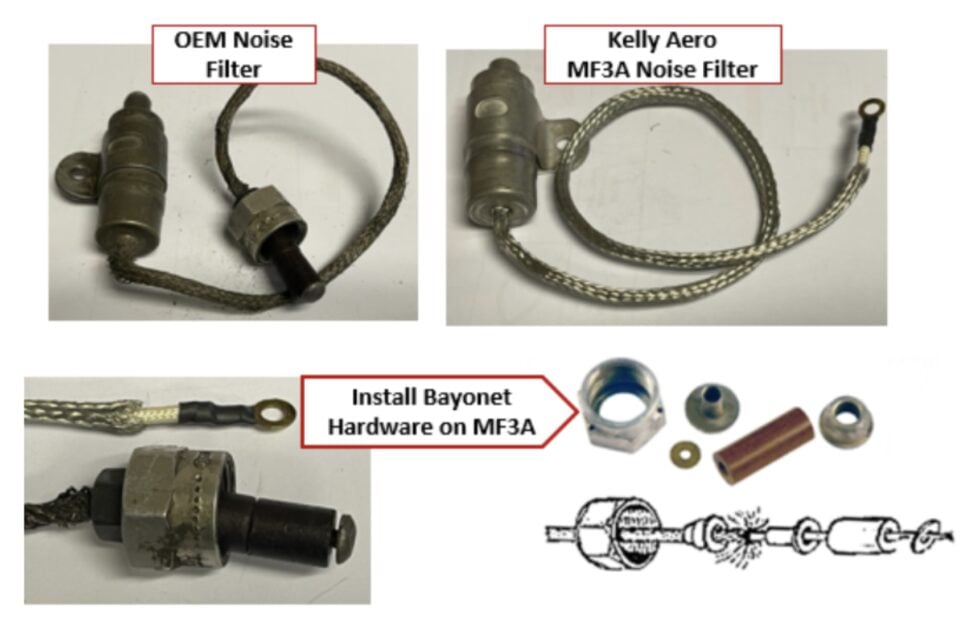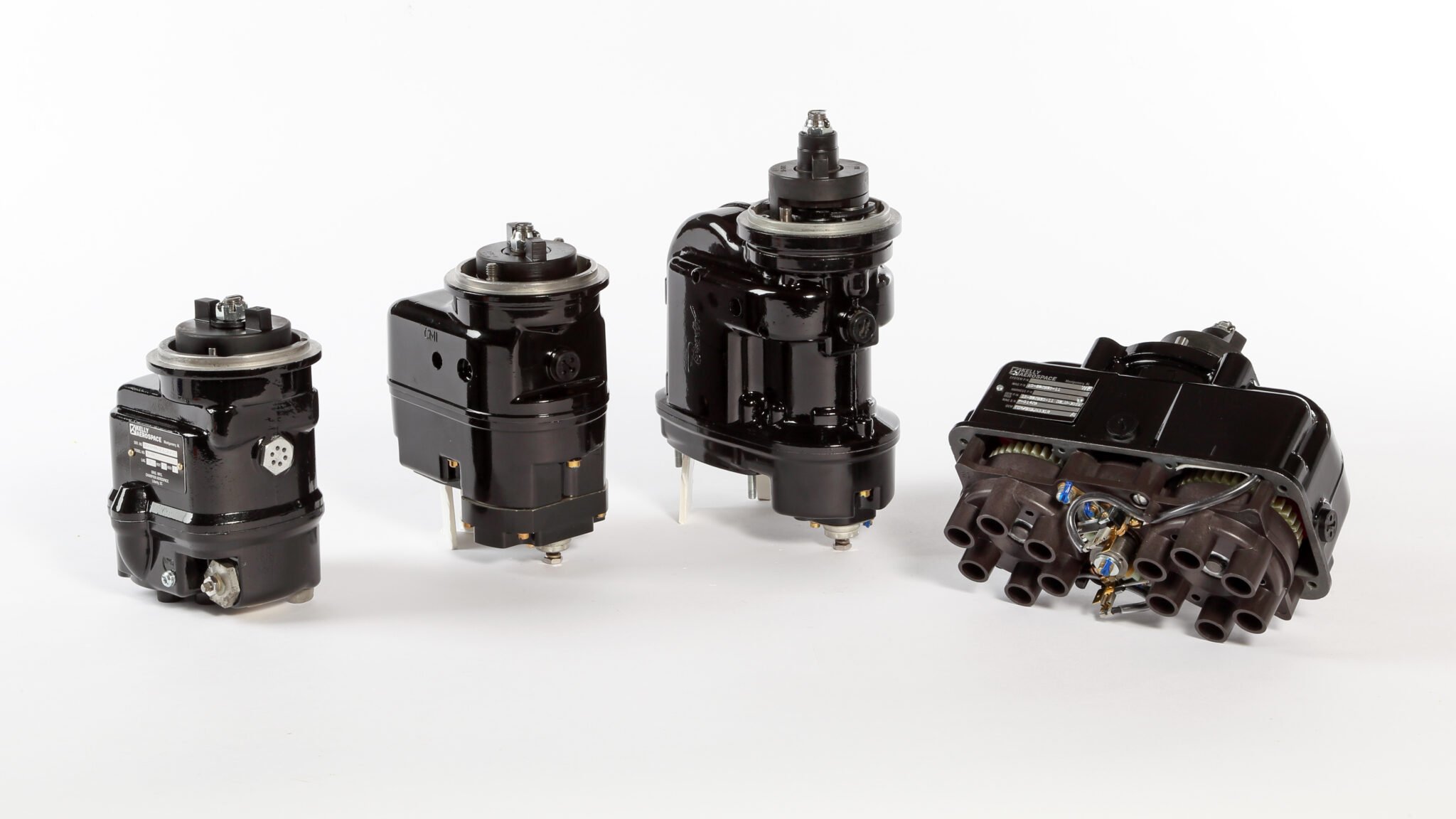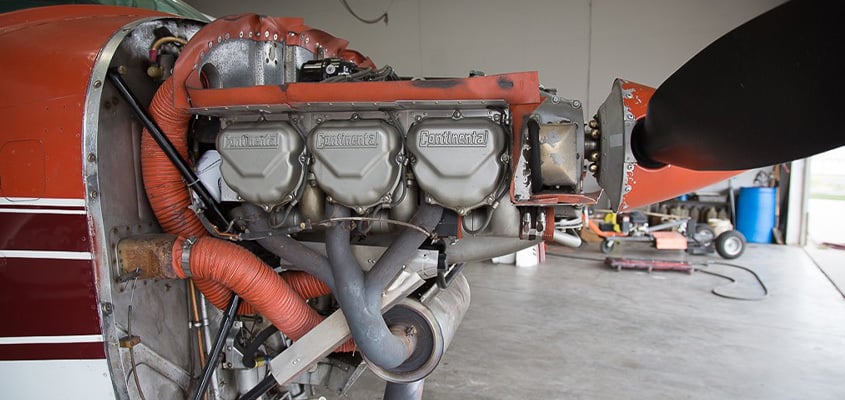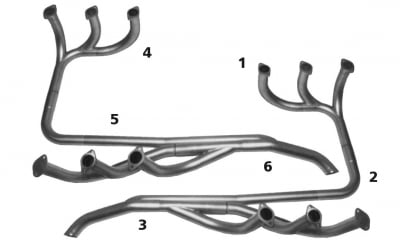Magneto Noise Filter?
Lots of older Bendix magnetos are returned either as cores or for a custom overhaul with large external capacitors attached to the outside of the magneto. Much to the surprise of the customer, this big capacitor is not replaced or provided as new as part of an overhauled magneto. In fact, this capacitor is not shown in the magneto overhaul manual or parts list, and there is little to no documentation as to how these parts are installed with the magneto. So…what is this thing?
This big capacitor is called a “Radio Noise Filter” and its intended purpose is to reduce radio noise generated by the magneto. It is a relic of a bygone era as an attempt to fix radio static problems experienced in aircraft radios used in general aviation airplanes of the 1950s and 1960s. While not useful for current aircraft and avionics, these capacitors are still sold as a spare part.

NOISE FILTER- WHY IT WAS NEEDED, WHY IT IS NOT NEEDED NOW
When the magneto is operating, the contact points close to allow the magneto to build a charge, and then open to allow the current to discharge which creates the ignition spark. The result is a pulsating voltage produced at the internal magneto capacitor, and this voltage is carried by the P-Lead and switch.
For the most part, this voltage has no effect on the engine or magneto and is simply a byproduct of normal operation. However, the pulsating voltage in the P-Lead can result in a low amplitude radiated signal that has the potential to create a signal that can be picked up by radio.
Because this signal is not a structured signal in the form of voice or morse code to identify VOR stations, it is termed “noise” and it is interpreted as interference. Radio noise is a rare occurrence and is as described: A steady whine, a general static or a staccato clicking sound as the spark plugs fire that is heard while tuned into aviation radio frequencies.
A lot has changed in the world of avionics from the 1950s to now. One of the serious problems in the 1950s and 1960s as radios became more common to the airplane cockpit, was “radio noise”. Early radios worked on dozen frequencies for voice and navigation and the radio designs were based on frequency crystals and vacuum tubes. The old radios were very susceptible to radio noise due to the limits of the components and circuit designs available at the time. On top of that, all of the components like lights, strobes, generators, spark plugs, ignition harnesses, and magnetos generated some sort of radio noise. From the radio standpoint, it was a noisy environment.

Noise filters, in the form of capacitors, were attached to all sorts of wires connected to lights, generators, and magnetos. The idea was that the filter would simply change or diminish the radio frequency of the noise generated by these devices to something outside of the aircraft radio frequency range.
Modern avionics manufactured since the late 1980s onward are digital, microprocessor controlled with much better filtering and much greater capability to reject noise. Additionally, FAA certification required that airborne emitters of electrical noise- like magneto ignition systems- keep the level of radiated electrical noise within acceptable levels.

For the most part, airplanes and engines built from the 1980s onward eliminated the noise filters as an extra part that was subject to maintenance or failure just wasn’t needed. Radio noise was cured by better shielding of airframe wires, lower noise emissions of magnetos, ignition wire, and spark plugs. The noise filters just were no longer required as they were Band-Aids to other issues such as unshielded P-Leads. A subtle issue is that the extra noise filter is in-line with the P-Lead and just another component subject to failure that could have a negative effect on magneto operation. In short, just another part that is subject to failure, so if it is not needed, it can easily be removed from the ignition system for greater overall system reliability.
NOT REQUIRED, BUT STILL IN DEMAND
Having said that, the industry still sells a lot of the MF3A Ignition Noise Filters. Why? We are not exactly sure, but there is a continuing demand for these parts. One reason may be that A&P mechanics are conservative and want to reinstall the replacement magneto to match, in every exact detail, the magneto that was removed. If the magneto was originally fitted with a noise filter, then a new MF3A noise filter is installed to replace the old, worn-out noise filter. Admittedly, the noise filter may serve a purpose on some older airframes or experimental airplanes where the wire shielding and ground paths are not as well designed towards reducing the effects of radio noise. Mechanics and amateur aircraft builders can use the filter as a tool to isolate the root cause of radio noise interference.
P-Lead connections are likely the most practical reason why the noise filter continues on in service. Most of the older Bendix magnetos used “bayonet connectors” for P-Leads. The bayonet connector is configured with a large nut, and an insulator, looking much like the spark plug connector on an ignition wire. The airframe P-Lead is configured with a #8 ring terminal. If the filter is discarded, then airframe P-Lead needs to be re-configured from the ring terminal to the bayonet-style hardware. The easiest path is the just re-use the old noise filter on the replacement magneto. This is discouraged as, in effect, an untested, decades-old part of unknown history is attached to a freshly overhauled magneto. There is a lot of risk to degrading the service life of the magneto with the worn-out and unneeded noise filter.
But, if an installer wants to install a noise filter, then the MF3A is the best option. The MF3A noise filter is configured with a ring terminal on the wire that connects to the magneto. This connection works with all current manufacture Bendix short cover 20/200 Series, Bendix 1200 Series, and all Slick 4300/6300 and Powerup ES4300/6300 Series magnetos. But, long cover Bendix 20/200 Series magnetos will need the ring terminal on the MF3A to be replaced with bayonet hardware as pictured below.

One final note: Remove the noise filter before returning the core magneto back to the parts supplier or back to QAA. While the filter is not required, it is useful to have to get the replacement magneto quickly installed until the airframe P-Leads can be reconfigured or a new manufactured noise filter like the MF3A is installed.


